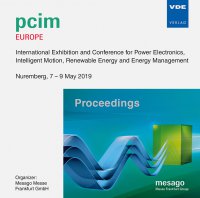High-Order Harmonics of the AC/DC Converter, Generated During the Intermittent and Continuous Operation of GaN-HEMT Power Switches
Conference: PCIM Europe 2019 - International Exhibition and Conference for Power Electronics, Intelligent Motion, Renewable Energy and Energy Management
05/07/2019 - 05/09/2019 at Nürnberg, Deutschland
Proceedings: PCIM Europe 2019
Pages: 8Language: englishTyp: PDF
Personal VDE Members are entitled to a 10% discount on this title
Authors:
Vukic, Vladimir Dj.; Mrvic, Jovan (Electrical Engineering Institute “Nikola Tesla”, University of Belgrade, Belgrade, Serbia)
Katic, Vladimir A. (Faculty of Technical Sciences, University of Novi Sad, Novi Sad, Serbia)
Abstract:
High electron mobility transistors (HEMT) have a growing application in the modern power converters. Gallium nitride (GaN) field effect transistors (FET) are particularly promising solutions for operation at very high switching frequencies. The aim of this paper is to examine the harmonic spectra of the high-frequency AC/DC power converter based on GaN HEMTs, tested both during its intermittent and continuous operation. Particular interest is dedicated to the effects of high order harmonics (above the 50th), not considered by international standards. Experiments were performed on the 4-kW, single-phase AC/DC converter, a power converter based on the bridgeless totem-pole power-factor correction (PFC) circuit. During the operation with minor load current (200 mA, being 2 % of the nominal output current), power converter operated in the intermittent mode, with bursts of control pulses succeeding the idle mode, when there were not pulses on the power switches. There was observed the great difference in the current total harmonic distortion (THDi) of the intermittent operation, comprising of these two modes. In the idle mode were dominant very-high order harmonics (one after the other, the 693rd, the 1384th and the 230th), with THDi being approximately 6.5 %. In a burst mode, the 3rd harmonic was dominant, while current distortion was very high, reaching THDi = 23 %. On the other hand, during the continuous operation with 70 % of the nominal load, only low-order harmonics became dominant, with THDi being less than 3.6 %.


